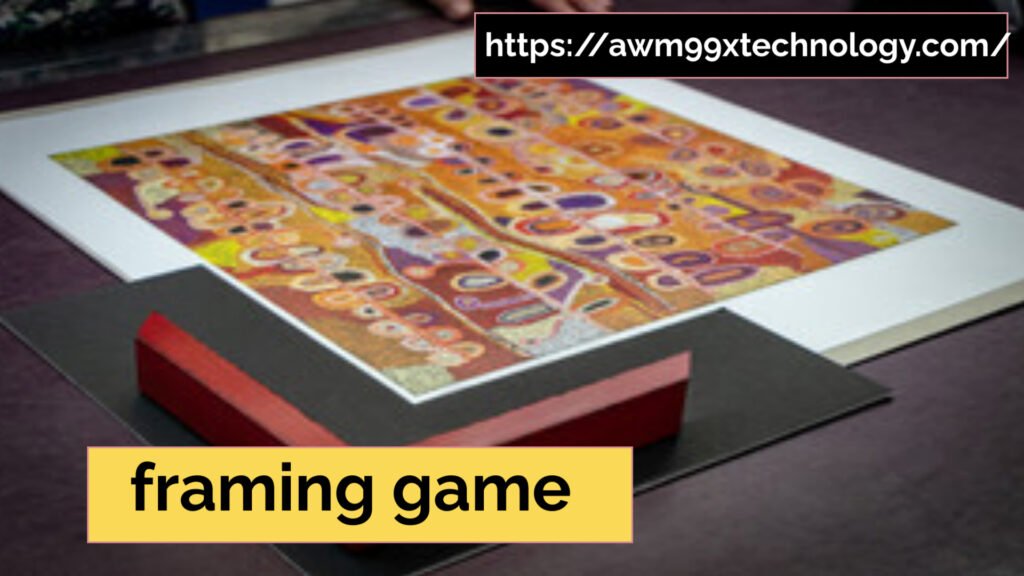Table of contents
- Introduction
- Overview of The Framing Game
- What is The Framing Game?
- The Role of Communication in Customer Experience
- Who Would Play The Framing Game?
- How The Framing Game Works
- Benefits of Engaging in The Framing Game
- Proven Applications of The Framing Game
- Measuring Success in Customer Experience
- Challenges in Executing Communication Strategies
- Tools for Improving Communication Skills
- Planning Tomorrow’s Customer Experience
- FAQs
- What are the key benefits of The Framing Game?
- Who should participate in The Framing Game?
Introduction
The Framing Game is a new tool designed to enhance customer experiences by improving communication across various business spheres. Notably, it highlights the necessity for organizations to engage their customers effectively. This blog focuses on how The Framing Game works, its advantages, and its application among marketers, sales teams, and product managers. Ultimately, with effective communication, companies can enhance their marketing strategies, boost customer retention, and achieve better outcomes throughout the customer lifecycle.

Overview of The Framing Game
Effective communication within organizations is essential for delivering optimal customer experiences. Furthermore, by targeting specific audiences, companies can articulate their value propositions more clearly. Therefore, understanding how communication shapes customer experiences becomes crucial
What is The Framing Game?
The Framing Game helps improve customer interactions by enhancing communication. Specifically, it enables marketers to better understand their customers and craft appropriate messages. Originally designed as a game, it aims to shift the communication approach. Consequently, it allows for customization based on customer pain points and behavioral economics.
Definition: This communication strategy tool enhances customer engagement.
Development and Purpose: Although initially intended for marketers and field sales, other organizations focused on improving customer-centered approaches have also embraced it. Therefore, its adaptability extends beyond its original purpose.
The Role of Communication in Customer Experience
Organizations that embed effective communication systems enjoy higher customer satisfaction and loyalty. Additionally, such systems significantly enhance customers’ experiences with the business.
Importance of Communication: By providing clear and personalized information and services, companies can positively influence customer retention.
Impact on Customer Loyalty: A previous study revealed that 74% of consumers were more likely to purchase from a brand rather than a specific product due to effective communication. Thus, businesses can leverage this insight to improve their communication strategies.
Communication Strategies: Implementing strategies aimed at understanding customer pain points results in higher levels of customer satisfaction and retention. Therefore, businesses that prioritize communication can experience substantial benefits.

Who Would Play The Framing Game?
The Framing Game benefits various teams within an organization, especially client-facing and content-creating teams. For instance:
Marketing: The game helps formulate strategies for communicating with customers and adapting to their behaviors.
Product Management: Furthermore, it provides insights into customer needs, aiding in the development of appropriate products and improving communication regarding those products.
Sales Team: Importantly, the game enhances communication skills, which in turn leads to higher levels of customer satisfaction. Additionally, as participants improve their communication, they are better equipped to meet customer needs.
How The Framing Game Works
The Framing Game follows a sequential approach, aligning communications with relevant business objectives. Moreover, it focuses simultaneously on improving both internal and external communications.
Setup and Preparations:
- First, identify the main causes of customer dissatisfaction.
- Next, create customer maps using analytics tools.
Key Phases of the Game:
- Customize processes through personal communication.
- Gather customer feedback at different points in their journey.
- Analyze statistics for secondary marketing activities.
Benefits of Engaging in The Framing Game
The Framing Game offers numerous benefits for both individuals and organizations:
- Better Understanding of Customer Responses: It improves the reception and interpretation of customer feedback, facilitating the development of messaging that resonates with customers.
- Customer-Oriented Strategy: By aligning organizational objectives with customer needs, businesses foster repeat patronage.
- Employee Training: Moreover, the game equips employees with advanced communication techniques and strategies to manage customer relationships effectively.
Proven Applications of The Framing Game
Several personalization-focused businesses have successfully implemented The Framing Game:
Case Study 1: A retail firm applied the Framing Game for sales personnel training, resulting in a 15% increase in its Net Promoter Score (NPS).
Case Study 2: Additionally, a technology firm used the game to enhance interactions between product managers and customers, leading to a 20% increase in customer retention.
Measuring Success in Customer Experience
To measure the effectiveness of The Framing Game and other communication initiatives, organizations should align with relevant management objectives.
- Net Promoter Score (NPS): This metric indicates customer loyalty and willingness to recommend the brand.
- Customer Satisfaction Score (CSAT): This score reflects users’ satisfaction with interactions.
- Success Measurement: By regularly collecting feedback and evaluating client actions, companies can adjust their internal and external communications to enhance effectiveness.
Challenges in Executing Communication Strategies
While communication strategies have their benefits, businesses may encounter challenges when implementing new approaches. For instance:
- Resistance to Change: Employees may struggle to adopt new communication methods.
- Training Resources: Insufficient resources for creating effective communication strategies, including training content and tools like CRM systems, may hinder implementation.
Tools for Improving Communication Skills
In addition to The Framing Game, various tools can enhance communication skills and customer experience:
- Customer Relationship Management (CRM) Software: This software analyzes customer interactions to improve communication.
- Feedback Platforms: These platforms enable organizations to gather valuable customer responses directly, informing their communication processes.
Planning Tomorrow’s Customer Experience
As technology advances, customers will likely shift their strategies for interacting with companies. Consequently, customization, artificial intelligence, and data-driven insights will shape the future of customer experiences.
- Personalization: Tailored interactions will become essential as consumers seek more personalized engagements with brands.
- AI in Customer Experience: Artificial intelligence will enhance human-computer interactions, improving accessibility for customers.
- Data-Driven Insights: Furthermore, businesses will increasingly rely on data to evaluate customer behavior and optimize their customer journeys.
FAQs
What are the key benefits of The Framing Game?
The key benefits include enhanced communication, improved understanding of customers, and more effective messaging, all of which lead to higher customer satisfaction and retention.
Who should participate in The Framing Game?
Marketers, product managers, and sales teams should engage with the game as it helps them adjust communication strategies to align with customer behavior.
How can businesses measure the success of their customer experience initiatives?
Businesses can use metrics like Net Promoter Score (NPS) and Customer Satisfaction Score (CSAT) to assess the effectiveness of their customer experience strategies.

ALSO READ:CRM SOFTWARE CANGURO: A GUIDE THROUGH MY LENS
Conclusion
In conclusion, The Framing Game serves as a valuable instrument for companies aiming to enhance their customer experiences by refining their communication strategies. By focusing on customer feedback and actions, businesses can foster a customer-centric culture that drives retention and success.






